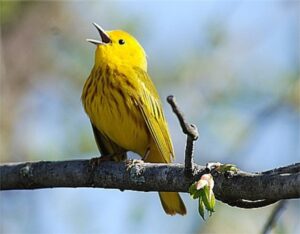Neonicotinoid Insecticides Linked to Collapsing Bird Populations

Birds, like bees, are showing startling population declines as a result of exposure to neonicotinoid insecticides, cites new research.
The culprit is believed to be imidacloprid, a pesticide in the neonicotinoid class of chemicals, four of which have already been banned in Europe because of their suspected link to bee collapse.
“Imidacloprid is one of a number of neonicotinoid insecticides introduced in the 1990s as a more environmentally friendly way of dealing with crop pests” reports BBC News.
Now, a study conducted by Dutch scientists and published in the journal Nature, finds for the first time that common bird species are at high risk for population collapse as a result of exposure to imidacloprid.
The researchers looked at 15 bird species including warblers, swallows, thrushes and starlings—species that eat insects as their primary food source. The researchers found “higher concentrations of imidacloprid in the water was ’consistently associated’ with declines in many of the monitored birds,” reports BBC News.
According to the researchers, the neonicotinoid pesticides, which are typically used as a coating on seeds, often leaches into soil and water, where it persists sometimes as long as 3 years. This ongoing accumulation is killing insects and impacting the bird species who eat them.
“They might be less able to produce their young, or grow their young,” said lead author of the study, Caspar Hallman from Radboud University.”It might increase their mortality by food deprivation. We think this is the most likely mechanism.”
Bayer CropScience, which manufacturers the neonicotinoid insecticides continues to deny that the chemicals are having a negative impact on bird and bee populations.
Find Jill on Twitter @jillettinger
Related on Organic Authority
Neonicotinoid Insecticides Cause Environmental Groups to Sue California
175 Toxic Chemicals in Food Packaging ‘Undesirable and Unexpected’, Study Finds
Math Error? Common Pesticides 1,000 Times More Toxic Than Advertised
image: billtacular

